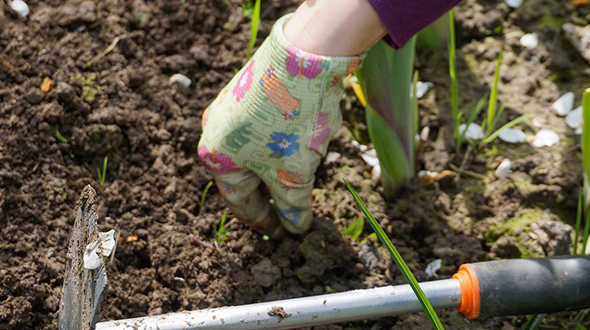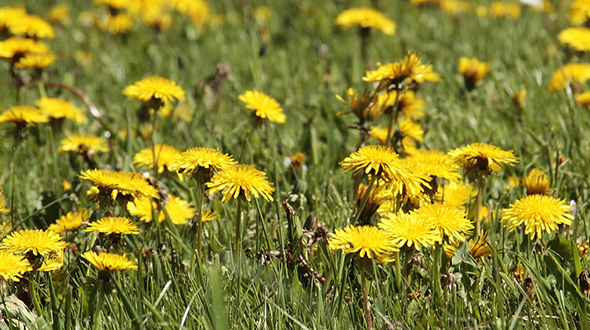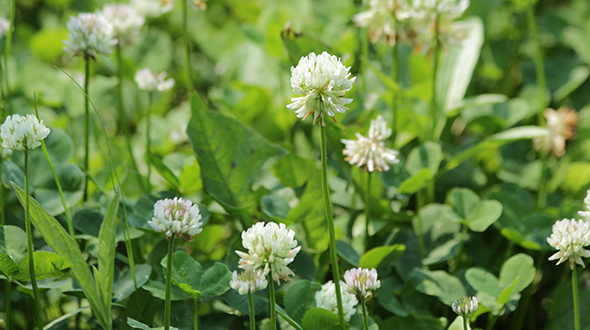
Prevent your yard and garden being full of pesky and undesirable weeds. Knowing how to identify weed species growing in your Georgia landscape, yard, and garden will help you control their growth before they can spread.
toddsmariettatreeservices.com gathered the following species, growing, and control information about five common weeds thriving in the state of Georgia.
1. Dandelion (Taraxacum)

The incredibly common dandelion is one of the most recognizable weeds growing in North America. The radially symmetrical flowerhead of this species is bright yellow and singularly arranged on a terminal shoot of its light-green, slender stem that secretes a milky sap when wounded. The weed’s leaves are broad and long with irregular teeth and lobes.
Growth Pattern – Dandelion weeds grow from seeds that germinate throughout the entire growing season. The weed remains in the seedling stage for approximately 8-15 weeks. Dandelions produce a rosette of tiny pale yellowish leaves. At the same time, all this is taking place above ground; the plant is growing a significantly deep root.
Size at Maturity – 2 to 6 inches in height and width
Elimination/Control – A broadleaf herbicide is excellent for killing dandelions in lawns. The herbicide will kill the dandelions and not the grass.
Seed – Dandelions can grow from seeds or by division
Is This Species Edible – Every part of a dandelion weed is edible for humans.
2. Clover (Trifolium)

Clovers are typically a short-lived species and feature alternate compound leaves, usually with three toothed leaflets. Tiny but fragrant flowers are crowded into dense, spherical heads or spikes and can appear in white, pink, red, or yellow. The weed’s small, dry fruits typically contain only one or two seeds.
Growth Pattern – This species can sprout in three to four days in the summer months. Clovers can take less than a week to germinate and sprout new growth when temperatures reach 59° Fahrenheit. Clover is persistent with an aggressive root structure, choking out most other weeds.
Size at Maturity – Clover can reach 4 to 24 inches in height, depending on the variety.
Elimination/Control – One way to control clover is to prevent it before it starts. Accomplish this by fertilizing your lawn regularly (3 to 4 times per year), which gives grass the nutrients it needs to grow thick and strong. Thick lawns can easily crowd out weeds like clover.
Seed – Clover does produce seeds. However, it also spreads by taking root along creeping stems where roots emerge from nodes. This allows clover weeds to spread out over vast areas.
Is This Species Edible – Wild clover is considered poisonous in large amounts. However, in small quantities, clover is both edible and potentially beneficial to your health.
3. Kudzu (Pueraria montana)

Kudzu is a climbing, semi-woody, perennial vine in the pea family. Deciduous leaves are alternate and compound, with three broad leaflets up to 4 inches across. While this species is considered a vine, it has made this list due to its invasive growth pattern.
Growth Pattern – Kudzu can spread up to 60 feet per growing season (in all directions). One root can produce multiple vines, all of which creep outward (horizontally and vertically), clinging to and climbing over everything while creating dense curtains of kudzu.
Size at Maturity – Undetermined. Kudzu grows exponentially in all directions once established.
Elimination/Control – Efforts to control kudzu infestations have produced mediocre results at best. These efforts included cutting, grazing, digging, burning, and herbicide application. This weed’s roots grow too deeply to be affected by freezing and burning only kills very young plants.
Seed – Kudzu typically won’t flower until its third growing season, with flowers and seeds forming only on its vertical climbing vines.
Is This Species Edible – Kudzu seeds and seed pods aren’t edible, but the leaves, roots, flowers, and vine tips are.
Note: This species can quickly climb trees and rob them of sunlight, effectively weakening or killing them. If you have any vine species climbing your trees, contact a professional tree service to help you prevent a catastrophe.
4. Crabgrass (Digitaria)

Crabgrass is a fast-growing, coarse-textured yellowish-green grass that is conspicuous when found growing among smooth textured, dark green, cool-season turf.
Growth Pattern – Crabgrass seeds germinate from early spring to late summer. Crabgrass continues to grow until midsummer when its vegetative growth slows, and the weed enters its reproductive stage.
Size at Maturity – Up to 2 feet in height while lower stems radially branch out.
Elimination/Control – A highly effective way of eliminating crabgrass is to apply a pre-emergent herbicide before the crabgrass seed can germinate.
Seed – This weed produces purplish seed heads from mid-summer until frost kills the plants.
Is This Species Edible – Crabgrass is not only nutritious but one of the planet’s fastest-growing cereals, producing edible seeds in as little as six to eight weeks. This species is a horrible weed but a wonderful edible.
5. Bittercress (Cardamine hirsuta)

Cardamine hirsuta, commonly referred to as “hairy bittercress,” is an annual or biennial plant species in the Brassicaceae family. It is common in moist areas around the globe.
Growth Pattern – Winter annual broadleaf weeds, like this species, germinate in late fall or winter and experience growth during any warm weather spells, which can occur in the winter, but will otherwise remain dormant during the winter. They resume growth and produce their seeds in the spring and will die with increased early summer temperatures.
Size at Maturity – 3 to 12 inches in height with varied circumferences.
Elimination/Control – Prevent invasions into turf areas by encouraging thick and healthy grass growth. This weed will easily invade thin or patchy areas.
Seed – Bittercress spreads by seeds that are dispersed as their pods explosively burst open upon maturing.
Is This Species Edible – Yes. This species is edible and often used as a salad green.
Georgia Weed Identification and Control
In this article, you discovered growing, control, and general species information on several common Georgia weed species.
Knowing how to identify a weed species and its attributes will help you eliminate or cultivate it, returning your turf to its full glory.
Ignoring the weeds that invade your Georgia landscape can quickly lead to an embarrassing, torn-up-looking yard and garden.
Sources:
hort.extension.wisc.edu/articles/dandelion-taraxacum-officinale/
plants.ces.ncsu.edu/plants/trifolium-repens/
misin.msu.edu/facts/detail/?id=18
ipm.ucanr.edu/PMG/WEEDS/crabgrasses.html
canr.msu.edu/resources/hairy-bittercress-cardamine-hirsuta
(678) 505-0266
Originally published on: http://www.toddsmariettatreeservices.com/5-common-weeds-in-georgia/

No comments:
Post a Comment